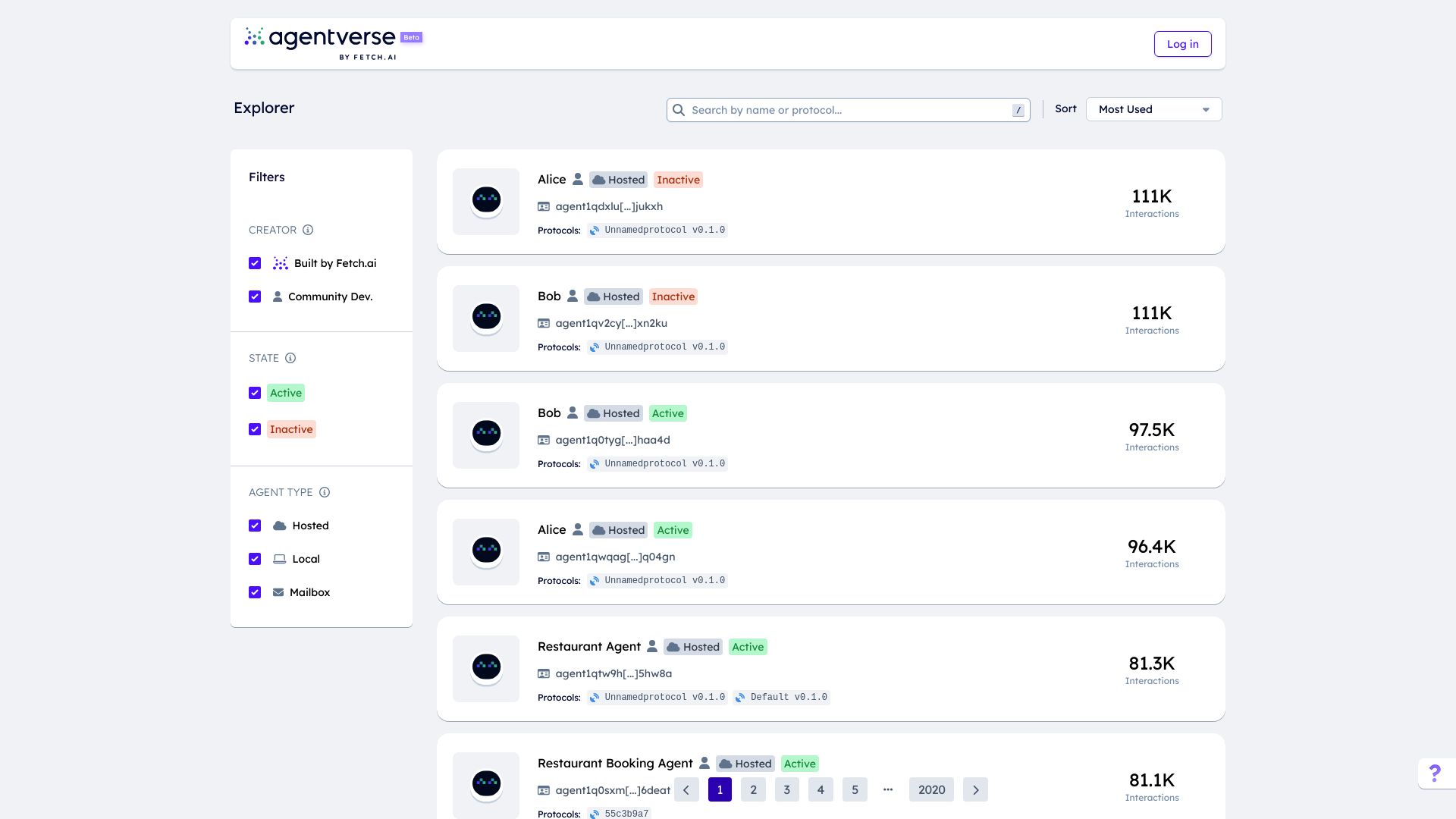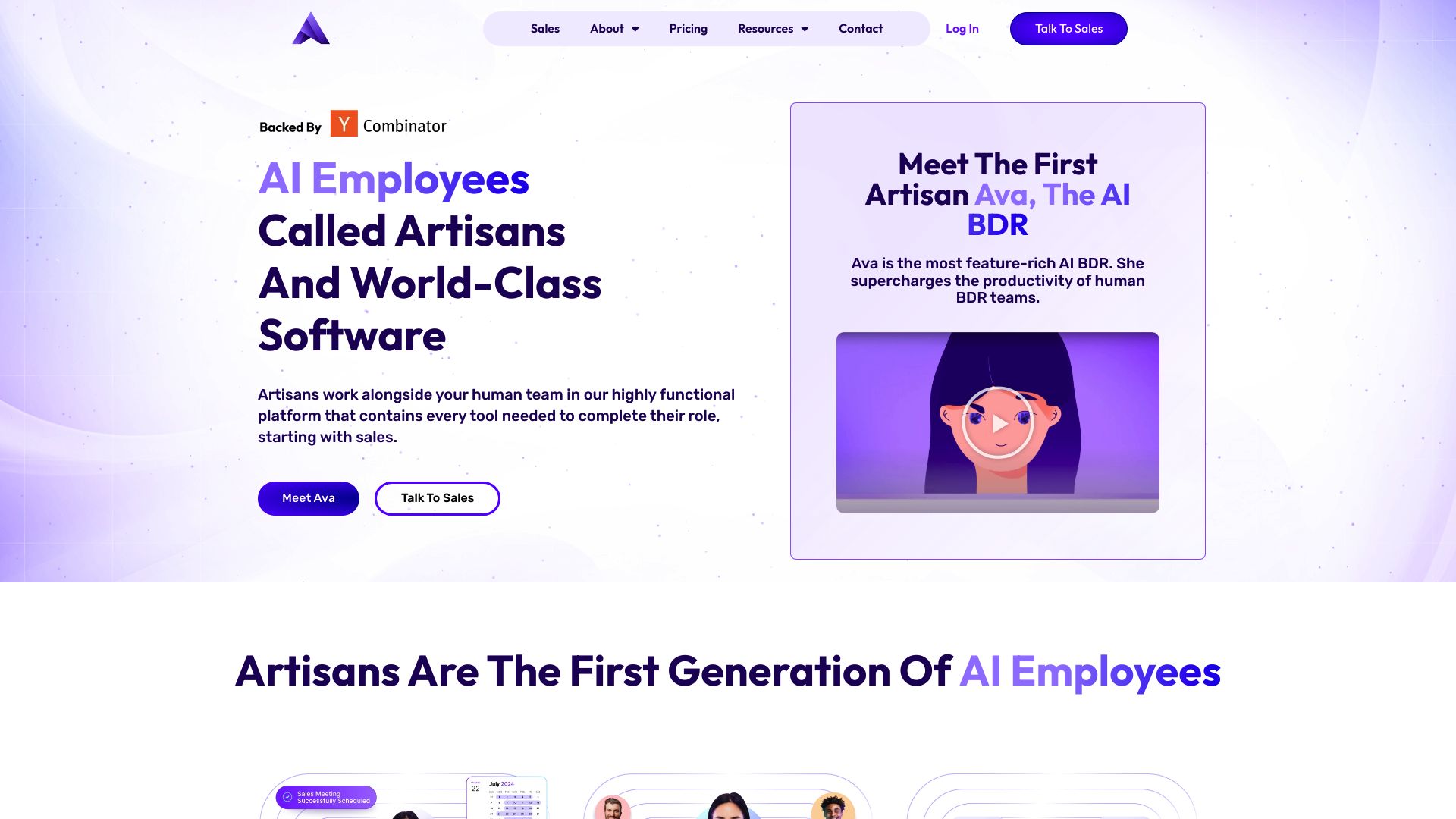AgentVerse vs. Artisan AI: A Comparative Analysis for AI Developers
AI agent development platforms reshape how businesses automate tasks and enhance productivity. AgentVerse vs. Artisan AI offer distinct approaches to this challenge, each with unique strengths and limitations. AgentVerse empowers developers with an open-source toolkit for creating autonomous agents, while Artisan AI provides no-code solutions for integrating AI workers into existing teams.
This comparison delves into the core features, use cases, and limitations of both platforms, contrasting them with the comprehensive capabilities of SmythOS. Whether you’re a developer seeking granular control or a business leader looking for turnkey AI solutions, this analysis will guide you through the evolving landscape of AI agent platforms, helping you make an informed decision for your organization’s needs.
AgentVerse Overview
AgentVerse empowers developers to create and manage AI agents through its open-source platform. The system leverages Python and the uAgents library, enabling the construction of autonomous software entities capable of performing diverse tasks and interacting with users, environments, and other agents.


AgentVerse facilitates agent development with tools and templates, allowing users to host and manage their creations directly through the platform’s interface. A key feature is the Almanac, a decentralized registry where agents self-register, fostering discovery and connectivity among agents and users. The platform defines communication protocols that standardize message formats, enabling seamless agent interactions.
AgentVerse… leverages Python and the uAgents library, enabling the construction of autonomous software entities capable of performing diverse tasks and interacting with users, environments, and other agents.
Integration with the DeltaV conversational AI app extends AgentVerse’s utility, allowing users to access agent capabilities through natural language conversations. The platform implements usage limits and quotas to manage resource consumption effectively.
While AgentVerse offers powerful tools for agent creation and management, it lacks some advanced features found in other platforms. The absence of a visual builder or no-code editor may limit accessibility for non-technical users. Additionally, the platform does not explicitly address multimodal inputs, human-AI interaction interfaces, or advanced security features like data encryption and OAuth.
Despite these limitations, AgentVerse’s strength lies in its focus on agent autonomy, collaboration, and scheduling capabilities. The platform supports memory and context management, enabling agents to maintain state and make informed decisions. Its on_interval decorator facilitates task scheduling, allowing for the creation of agents that can work independently on recurring tasks.
Artisan AI Overview
Artisan AI provides AI-powered digital workers called Artisans to automate business workflows and boost productivity. These hosted AI agents integrate into human teams, operating autonomously to handle repetitive tasks across sales, marketing, and other domains.
Artisan’s no-code platform enables non-technical users to leverage advanced AI capabilities without programming skills. The initial product, Ava, functions as an AI sales representative to automate outbound sales processes. Artisans can self-improve over time, requiring minimal ongoing human input.
Artisan AI provides AI-powered digital workers called Artisans to automate business workflows and boost productivity. These hosted AI agents integrate into human teams, operating autonomously to handle repetitive tasks…


Artisan AI emphasizes team integration, positioning its AI agents as digital team members that enhance human productivity rather than replace jobs. This approach aims to drive efficiency gains while maintaining a collaborative human-AI workflow.
Artisan AI emphasizes team integration, positioning its AI agents as digital team members that enhance human productivity rather than replace jobs.
The platform offers usage-based pricing plans tied to the number of leads contacted monthly, allowing businesses to scale AI usage as needed. While Artisan AI provides a user-friendly interface for creating and managing AI agents, it lacks some advanced features like multimodal inputs, explainability tools, and extensive API integrations found in more developer-focused platforms.
Artisan AI’s focus on sales and marketing automation with minimal technical barriers makes it an appealing option for businesses seeking to quickly implement AI-driven processes. However, users requiring deep customization or integration with complex existing systems may find the platform’s capabilities somewhat limited compared to more flexible development-oriented solutions.
Feature Comparison
AgentVerse and Artisan AI offer distinct approaches to AI agent development, each with its own strengths and limitations. AgentVerse provides an open-source platform for developers to create autonomous agents using Python and the uAgents library. It excels in agent autonomy, collaboration, and scheduling capabilities. The platform supports memory and context management, enabling agents to maintain state and make informed decisions. AgentVerse’s on_interval decorator facilitates task scheduling, allowing for the creation of agents that can work independently on recurring tasks.
In contrast, Artisan AI focuses on providing AI-powered digital workers called Artisans for automating business workflows, particularly in sales and marketing. Its no-code platform enables non-technical users to leverage advanced AI capabilities without programming skills. Artisan AI emphasizes team integration, positioning its AI agents as digital team members that enhance human productivity.
However, both platforms lack some advanced features found in more comprehensive solutions like SmythOS. Neither AgentVerse nor Artisan AI offer a visual builder or no-code editor, limiting accessibility for non-technical users. Both platforms also lack explicit support for multimodal inputs, human-AI interaction interfaces, and advanced security features such as data encryption and OAuth. SmythOS addresses these gaps with its intuitive drag-and-drop interface, extensive integration ecosystem, and robust security measures, making it a more versatile and accessible option for AI agent development across various skill levels and use cases.
| AgentVerse | Artisan AI | SmythOS | |
|---|---|---|---|
| CORE FEATURES | |||
| Environments (Dev, Production) | ❌ | ❌ | ✅ |
| Visual Builder | ✅ | ❌ | ✅ |
| No-Code Options | ❌ | ✅ | ✅ |
| Explainability & Transparency | ❌ | ❌ | ✅ |
| Debug Tools | ✅ | ❌ | ✅ |
| Multimodal | ❌ | ❌ | ✅ |
| Problem-Solving Capabilities | ❌ | ✅ | ✅ |
| Multi-Agent Collaboration | ✅ | ❌ | ✅ |
| Audit Logs for Analytics | ✅ | ❌ | ✅ |
| Work as Team | ❌ | ✅ | ✅ |
| Bulk Work | ❌ | ✅ | ✅ |
| Logs & Monitoring | ✅ | ❌ | ✅ |
| SECURITY | |||
| Constrained Alignment | ❌ | ❌ | ✅ |
| Data Encryption | ❌ | ❌ | ✅ |
| OAuth | ❌ | ❌ | ✅ |
| IP Control | ❌ | ❌ | ✅ |
| COMPONENTS | |||
| Foundation AIs | ❌ | ❌ | ✅ |
| Huggingface AIs | ❌ | ❌ | ✅ |
| Zapier APIs | ❌ | ❌ | ✅ |
| All other APIs, RPA | ❌ | ❌ | ✅ |
| Classifiers | ❌ | ❌ | ✅ |
| Logic | ❌ | ❌ | ✅ |
| Data Lakes | ❌ | ❌ | ✅ |
| DEPLOYMENT OPTIONS (EMBODIMENTS) | |||
| Deploy as API | ❌ | ❌ | ✅ |
| Deploy as Webhook | ❌ | ❌ | ✅ |
| Staging Domains | ❌ | ❌ | ✅ |
| Production Domains | ❌ | ✅ | ✅ |
| API Authentication (OAuth + Key) | ❌ | ❌ | ✅ |
| Deploy as Site Chat | ❌ | ❌ | ✅ |
| Deploy as Scheduled Agent | ✅ | ❌ | ✅ |
| Deploy as GPT | ❌ | ❌ | ✅ |
| DATA LAKE SUPPORT | |||
| Hosted Vector Database | ❌ | ❌ | ✅ |
| Sitemap Crawler | ❌ | ❌ | ✅ |
| YouTube Transcript Crawler | ❌ | ❌ | ✅ |
| URL Crawler | ❌ | ❌ | ✅ |
| PDF Support | ❌ | ❌ | ✅ |
| Word File Support | ❌ | ❌ | ✅ |
| TXT File Support | ❌ | ❌ | ✅ |
Best Alternative to AgentVerse and Artisan AI
SmythOS stands out as the superior alternative to AgentVerse and Artisan AI for building and deploying AI agents. Our platform offers a comprehensive solution that combines ease of use with powerful features, making it ideal for both technical and non-technical users.
We provide a visual drag-and-drop interface that simplifies agent creation without sacrificing functionality. This approach allows users to quickly build complex AI workflows and deploy them across multiple environments. Unlike AgentVerse’s code-centric approach or Artisan AI’s limited no-code options, SmythOS delivers true flexibility.
SmythOS stands out as the superior alternative to AgentVerse and Artisan AI for building and deploying AI agents… combines ease of use with powerful features, making it ideal for both technical and non-technical users.
Our platform excels in its extensive integration capabilities. We support a wide range of AI models, APIs, and data sources, enabling users to create versatile agents that can handle diverse tasks. This surpasses both AgentVerse’s limited ecosystem and Artisan AI’s focus on specific business workflows.
SmythOS prioritizes scalability and security. We offer robust features like data encryption, OAuth authentication, and IP control, addressing critical enterprise needs that AgentVerse and Artisan AI overlook. Our platform supports deployment as APIs, webhooks, chatbots, and scheduled agents, providing unmatched versatility in how AI solutions can be implemented.
By choosing SmythOS, users gain access to a cutting-edge AI operating system that accelerates agent development and deployment. Our vision is to revolutionize how businesses harness AI, making it 99% faster and more accessible. With SmythOS, companies can automate tasks, improve efficiency, and drive innovation at unprecedented levels across industries.
Conclusion
AgentVerse and Artisan AI offer unique approaches to AI agent development, each with distinct strengths. AgentVerse provides an open-source platform for developers to create autonomous agents using Python, excelling in agent collaboration and scheduling. Artisan AI focuses on AI-powered digital workers for business workflow automation, emphasizing team integration and accessibility for non-technical users.
However, SmythOS emerges as the superior choice, addressing limitations found in both platforms. Our intuitive drag-and-drop interface makes agent creation accessible to users of all skill levels, while our extensive integration ecosystem supports over 300,000 integrations. SmythOS’s robust security measures, including data encryption and OAuth support, ensure your AI operations remain protected.
SmythOS stands out with its versatile deployment options, allowing you to create agents once and deploy them anywhere — from APIs and webhooks to site chats and scheduled tasks. Our platform’s scalability, hosted vector database, and support for multiple AI models provide the flexibility and power needed for enterprise-level applications.
Experience the future of AI agent development with SmythOS. Create a free account today and unlock unlimited agent creation with our risk-free trial. Explore our diverse range of AI-powered agent templates to jumpstart your projects, or dive into our comprehensive documentation to discover the full potential of SmythOS. Transform your workflow and harness the power of AI with SmythOS — where innovation meets simplicity.
Last updated:
Disclaimer: The information presented in this article is for general informational purposes only and is provided as is. While we strive to keep the content up-to-date and accurate, we make no representations or warranties of any kind, express or implied, about the completeness, accuracy, reliability, suitability, or availability of the information contained in this article.
Any reliance you place on such information is strictly at your own risk. We reserve the right to make additions, deletions, or modifications to the contents of this article at any time without prior notice.
In no event will we be liable for any loss or damage including without limitation, indirect or consequential loss or damage, or any loss or damage whatsoever arising from loss of data, profits, or any other loss not specified herein arising out of, or in connection with, the use of this article.
Despite our best efforts, this article may contain oversights, errors, or omissions. If you notice any inaccuracies or have concerns about the content, please report them through our content feedback form. Your input helps us maintain the quality and reliability of our information.
